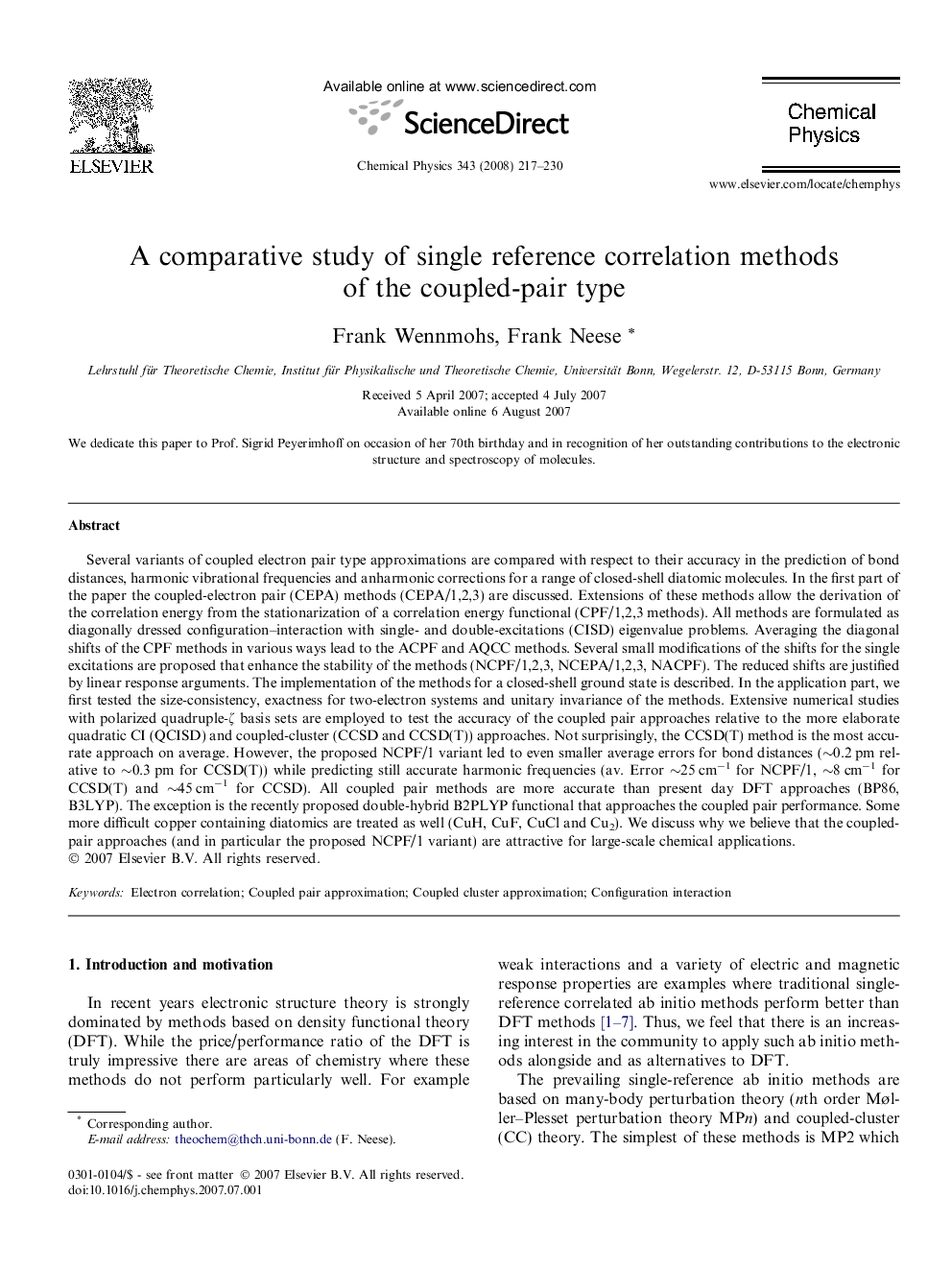| کد مقاله | کد نشریه | سال انتشار | مقاله انگلیسی | نسخه تمام متن |
|---|---|---|---|---|
| 5376241 | 1504315 | 2008 | 14 صفحه PDF | دانلود رایگان |
عنوان انگلیسی مقاله ISI
A comparative study of single reference correlation methods of the coupled-pair type
دانلود مقاله + سفارش ترجمه
دانلود مقاله ISI انگلیسی
رایگان برای ایرانیان
موضوعات مرتبط
مهندسی و علوم پایه
شیمی
شیمی تئوریک و عملی
پیش نمایش صفحه اول مقاله

چکیده انگلیسی
Several variants of coupled electron pair type approximations are compared with respect to their accuracy in the prediction of bond distances, harmonic vibrational frequencies and anharmonic corrections for a range of closed-shell diatomic molecules. In the first part of the paper the coupled-electron pair (CEPA) methods (CEPA/1,2,3) are discussed. Extensions of these methods allow the derivation of the correlation energy from the stationarization of a correlation energy functional (CPF/1,2,3 methods). All methods are formulated as diagonally dressed configuration-interaction with single- and double-excitations (CISD) eigenvalue problems. Averaging the diagonal shifts of the CPF methods in various ways lead to the ACPF and AQCC methods. Several small modifications of the shifts for the single excitations are proposed that enhance the stability of the methods (NCPF/1,2,3, NCEPA/1,2,3, NACPF). The reduced shifts are justified by linear response arguments. The implementation of the methods for a closed-shell ground state is described. In the application part, we first tested the size-consistency, exactness for two-electron systems and unitary invariance of the methods. Extensive numerical studies with polarized quadruple-ζ basis sets are employed to test the accuracy of the coupled pair approaches relative to the more elaborate quadratic CI (QCISD) and coupled-cluster (CCSD and CCSD(T)) approaches. Not surprisingly, the CCSD(T) method is the most accurate approach on average. However, the proposed NCPF/1 variant led to even smaller average errors for bond distances (â¼0.2 pm relative to â¼0.3 pm for CCSD(T)) while predicting still accurate harmonic frequencies (av. Error â¼25 cmâ1 for NCPF/1, â¼8 cmâ1 for CCSD(T) and â¼45 cmâ1 for CCSD). All coupled pair methods are more accurate than present day DFT approaches (BP86, B3LYP). The exception is the recently proposed double-hybrid B2PLYP functional that approaches the coupled pair performance. Some more difficult copper containing diatomics are treated as well (CuH, CuF, CuCl and Cu2). We discuss why we believe that the coupled-pair approaches (and in particular the proposed NCPF/1 variant) are attractive for large-scale chemical applications.
ناشر
Database: Elsevier - ScienceDirect (ساینس دایرکت)
Journal: Chemical Physics - Volume 343, Issues 2â3, 29 January 2008, Pages 217-230
Journal: Chemical Physics - Volume 343, Issues 2â3, 29 January 2008, Pages 217-230
نویسندگان
Frank Wennmohs, Frank Neese,